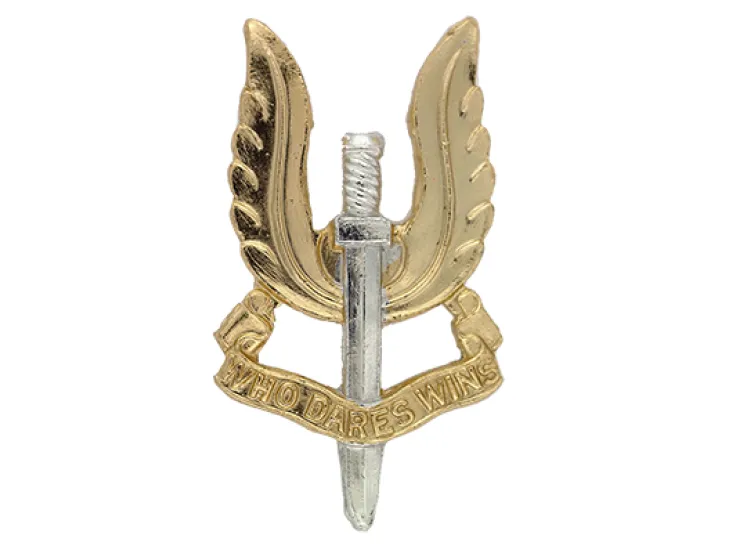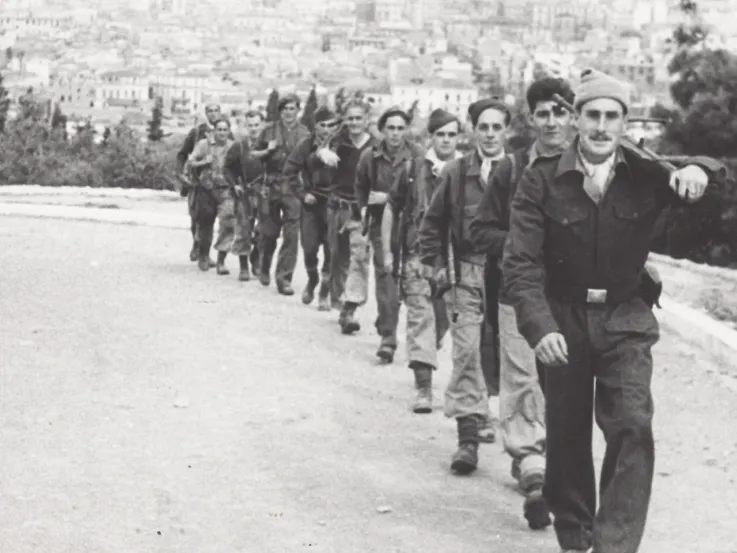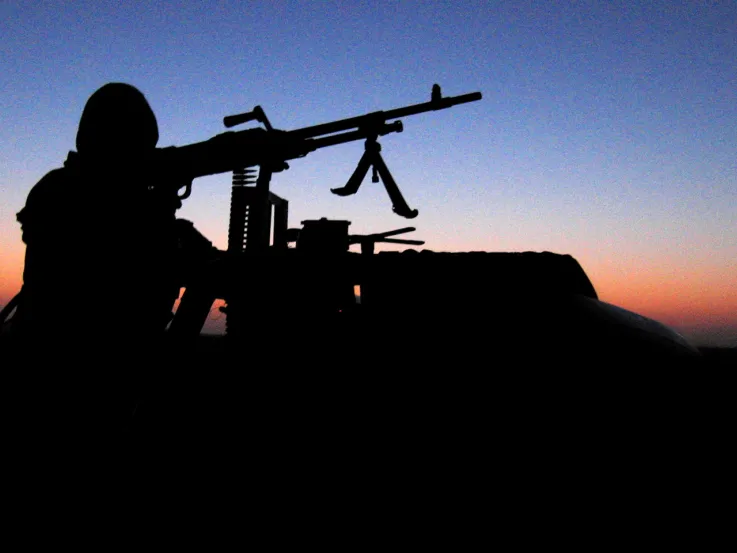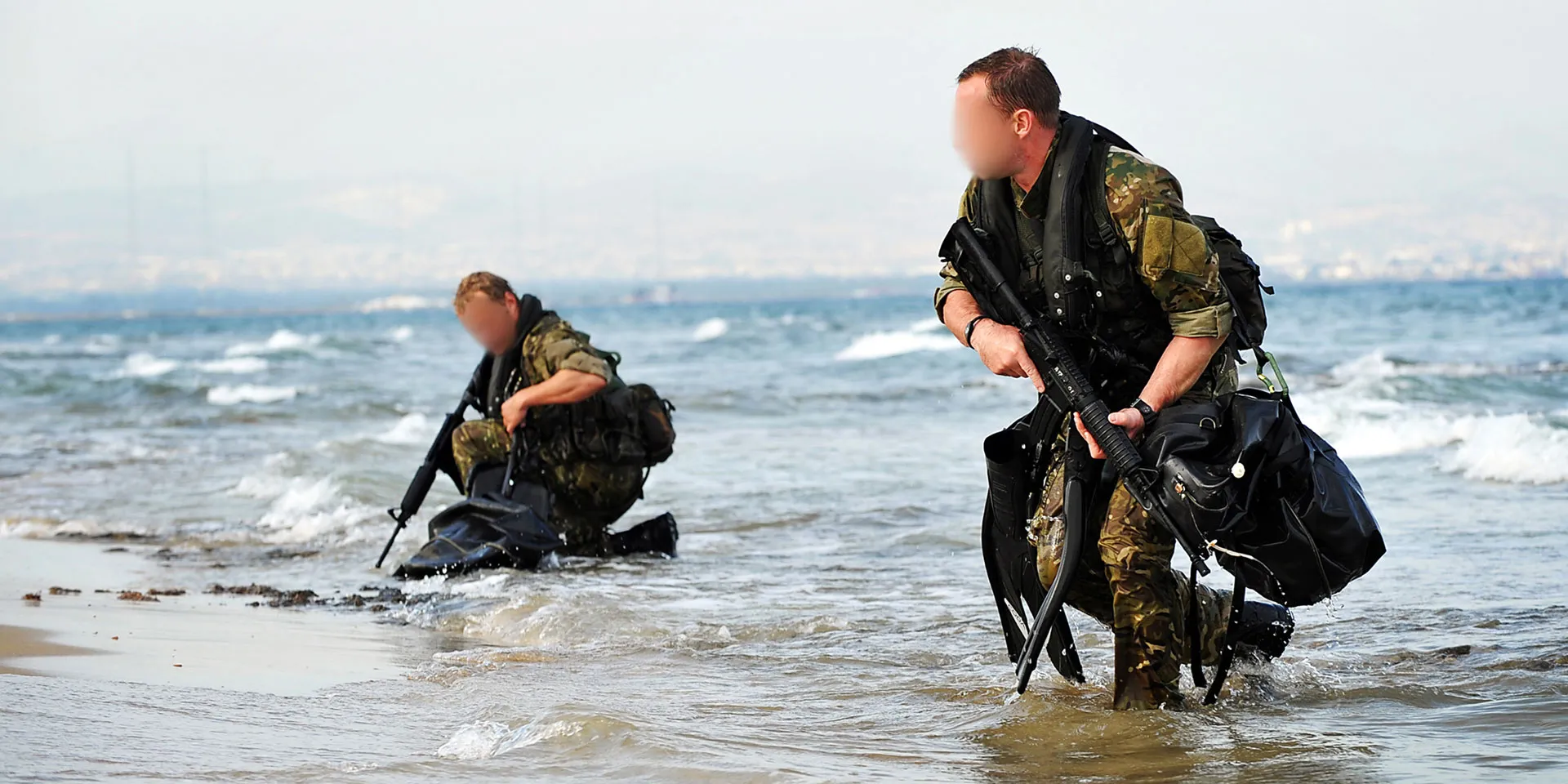
Two SBS Swimmer canoeists emerge from the sea with weapons ready, c2010 (© Crown)
Origins
The Royal Navy’s Special Boat Service traces its origins back to several units that undertook raids, sabotage and reconnaissance from small boats, canoes and submarines during the Second World War (1939-45). These included the Royal Marines Boom Patrol Detachment, the Army Commando’s Special Boat Section and the Combined Operations Pilotage Parties.

A Combined Operations Pilotage Parties canoe, c1944 (© IWM (MH 22716))
Re-established
After the war these units were disbanded. But their various roles, along with many of their personnel, were absorbed into the Royal Marine’s Combined Operations Beach and Boats Section (COBBS), formed in 1947. This was initially commanded by Major Herbert 'Blondie' Hasler who had led the 'Cockleshell Heroes' raid.
The COBBS formed a new Special Boat Section the following year. It went through several name changes, including the Special Boat Company (1951) and Special Boat Squadron (1974), before becoming the Special Boat Service in 1987.
Today, SBS recruits share the same gruelling selection process as the Special Air Service (SAS) and develop similar skills. But they acquire additional specialisms in underwater reconnaissance and demolition, canoeing and diving.

Special Boat Service badge (© Crown)

A Chinook lowering an SBS boat, c2000 (© Crown)
Maritime counter-terror
In 1972, members of the SBS parachuted into the Atlantic to board the ‘Queen Elizabeth II’ passenger liner following a bomb scare. Soon after, the SBS were given the maritime counter-terrorism role, with responsibility for protecting ports, ferries, cruise ships and oil platforms. They subsequently developed methods of rescuing hostages in all of these environments.
The SBS recently provided security during the 2012 Olympic and Paralympic sailing competitions. It has also assisted with seaborne anti-drug smuggling operations.
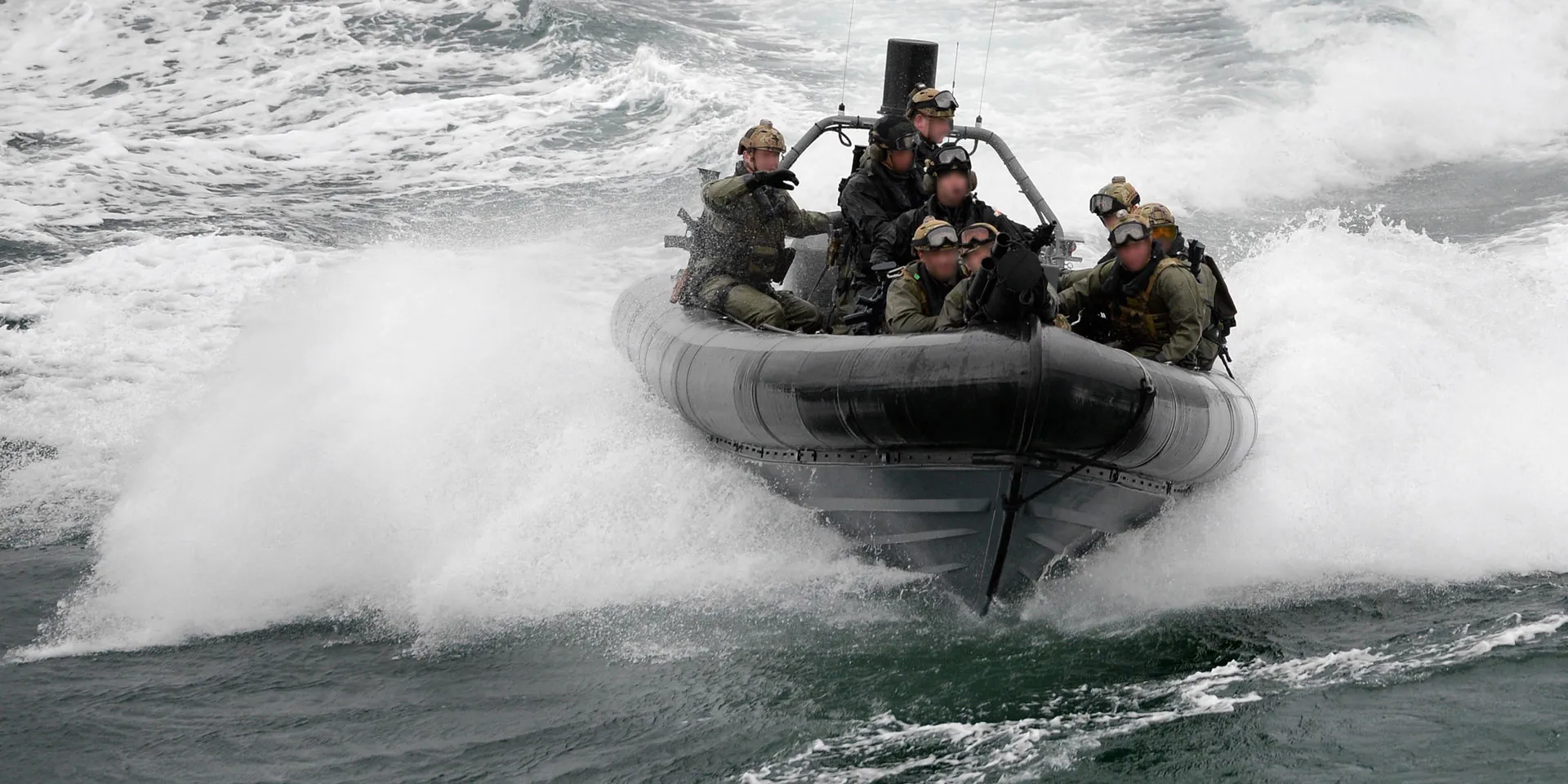
A Special Boat Service Rigid Inflatable Boat, c2010 (© Crown)
1945-48
Palestine
1950-53
Korean War
1963-66
Indonesian Confrontation
1969-2007
The Troubles
1982
Falklands War
1990-91
Gulf War
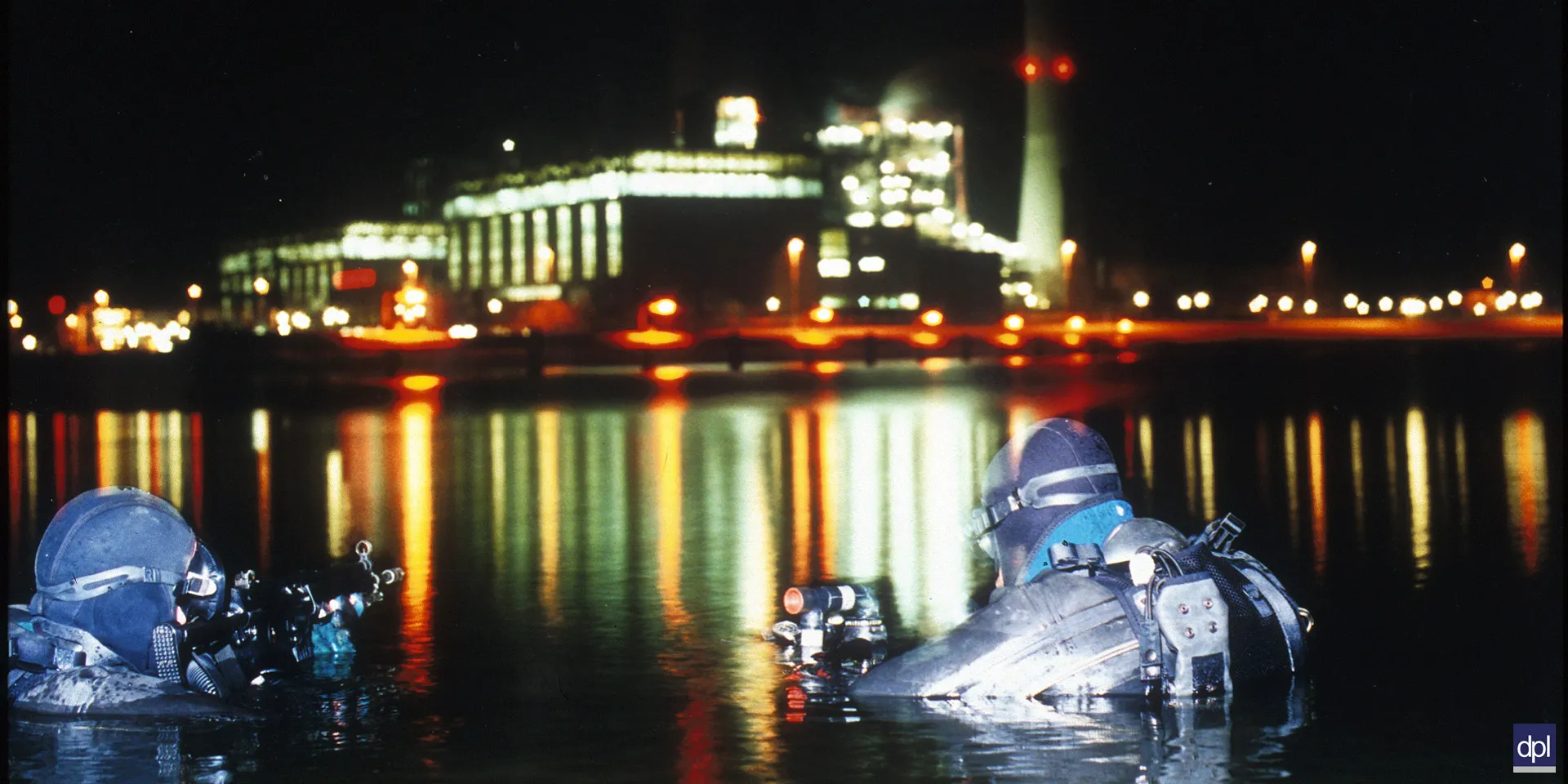
Swimmer canoeist divers pictured during a night-time exercise, c2000 (© Defence Picture Library)



